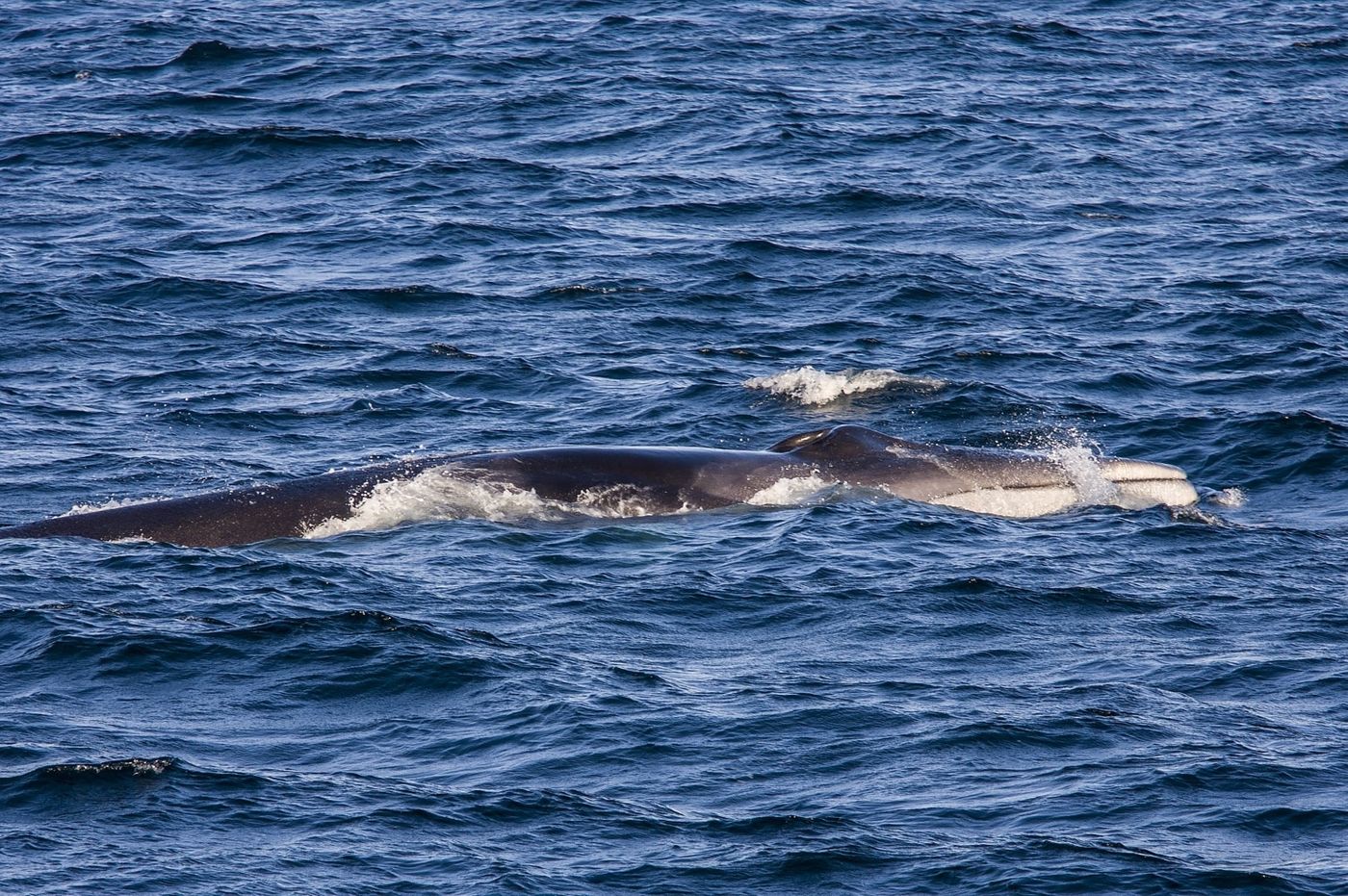A Gulf of California-Centric Fin Whale Population Stays There Year-Round
The fin whale (Balaenoptera physalus) is the second-largest animal species on Earth after the blue whale, but despite its immense size, the fin whale has proven time and time again to be both challenging to study and difficult to understand.
Image Credit: Craig Hayslip
The International Union for Conservation Nature (IUCN) recognizes the fin whale as a vulnerable species, but its population trend is increasing thanks to anti-whaling laws. Albeit music to animal conservationists’ ears, this fact hasn’t stopped scientists from wanting to learn more about the mysterious fin whale.
In an effort to do just that, a curious team of researchers from Oregon State University cracked open an archive of satellite tracking data that was collected via a population in the Gulf of California in 2001.
After comparing this data with acoustic data, prey movements, recent observations, and weather patterns, the team happened upon some surprising findings, which were published just last week in the journal PLOS ONE.
"One reason we decided to go back to this data set is that we know very little about fin whales in this region," explained study co-author Daniel Palacios from Oregon State University’s Marine Mammal Institute. "It is fairly remote, it is not densely populated, and it requires expensive technology to track whales over time."
Related: More than 145 whales become beached in New Zealand
Given the circumstances, sifting through older data was both smart and cost-effective. The loosely-populated region hasn’t changed much over the last 18 years, and the data painted a colorful picture of the local fin whale population that was overlooked previously.
"Researchers have known since at least the mid-1980s that fin whales inhabited the Gulf of California, but we just haven't been able to get much information about them," he continued. "As it turns out, we had an important piece of the puzzle in the tracking data set we just hadn't yet fully analyzed."
Related: Humpback whales make a comeback in regions around the world
Perhaps the most intriguing discovery was that this particular fin whale population inhabited the Gulf of California year-round instead of migrating to other parts of the ocean for either breeding or calving. While the animals did appear to move from one part of the gulf to another depending on prey and weather-related factors, the researchers say this behavior is unusual. The Mediterranean Sea is the only other body of water known to harbor resident fin whale population(s).
Another revelation was the idea that there could be anywhere between 100 and 700 ‘resident’ fin whales in the Gulf of California today. These are whales that reside in the Gulf of California year-round, but migratory fin whales may also inhabit the Gulf of California at certain times of the year – these wouldn’t be considered ‘resident’ fin whales because they’re only visiting.
Given the additional sources the researchers used to study the fin whales’ behavior this time around, they could conclude that the resident fin whale populations have learned to live only in this small community by year-round identifying prey hotspots and how they shift throughout the year as the seasons change.
"Feeding year-round is what separates fin whales, blue whales and related species from other baleen whales," Palacios added. "We think they are finding enough food in the gulf to stay there year-round, but we'd like to document that over a period of years."
Related: Ever wonder how whales became so large?
Given the Gulf of California’s vulnerability to illegal fishing habits, conservationists want to stay on top of critical animal populations to ensure they’re never threatened with extinction. Research of this nature helps significantly with those goals, and with that in mind, follow-up studies will likely ensue.
Source: Oregon State University, PLOS ONE, IUCN









